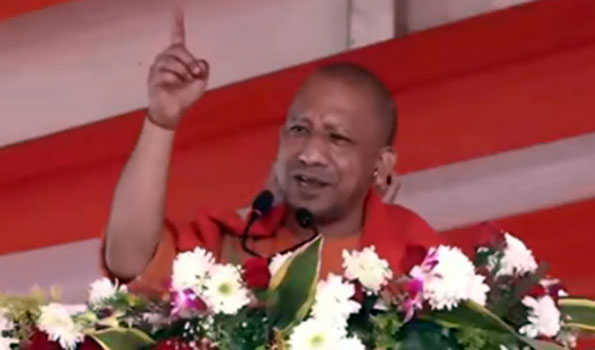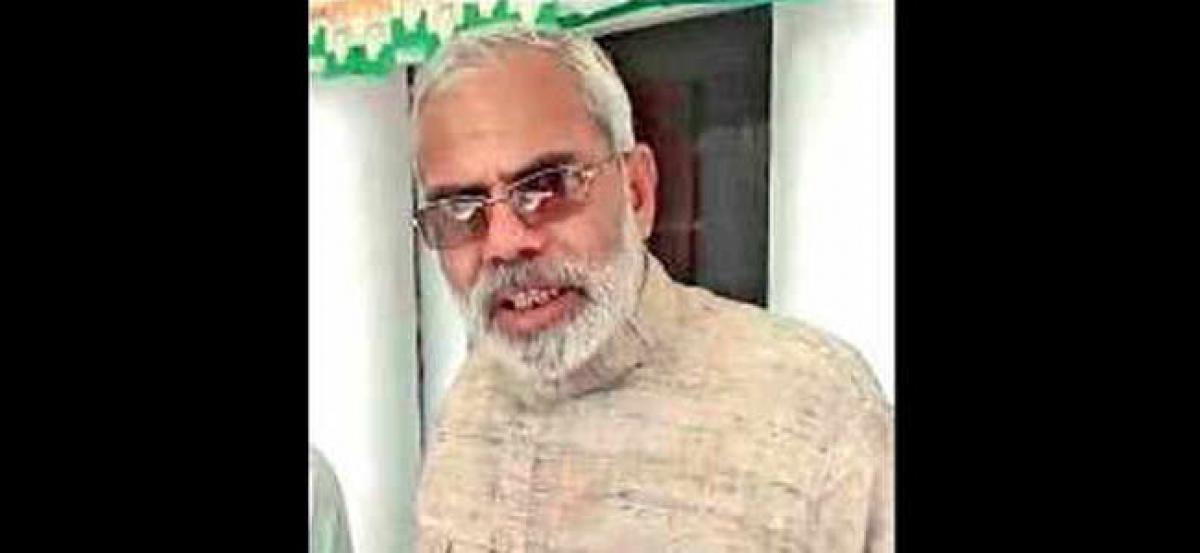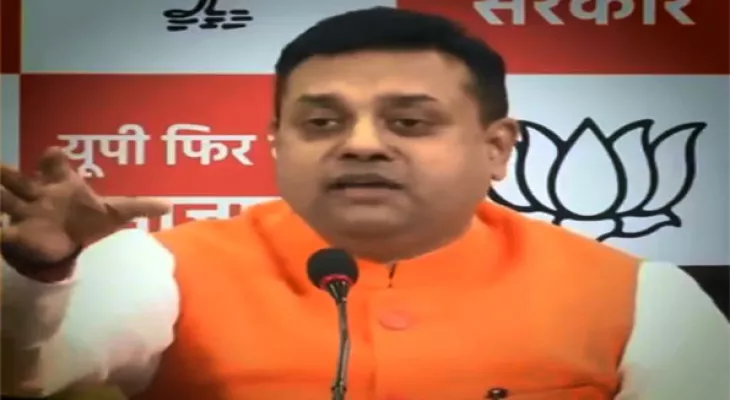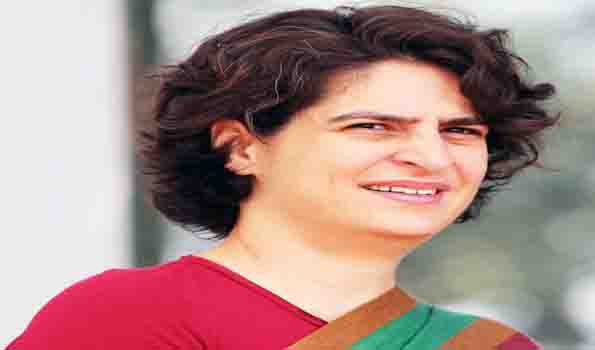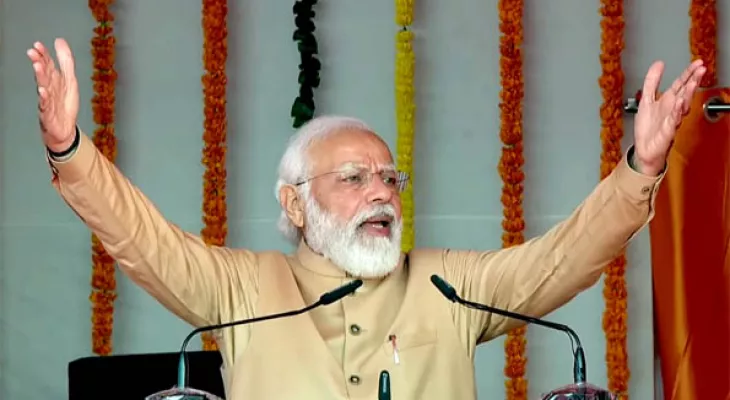UP Phase 2: Polling Begins For 55 Seats
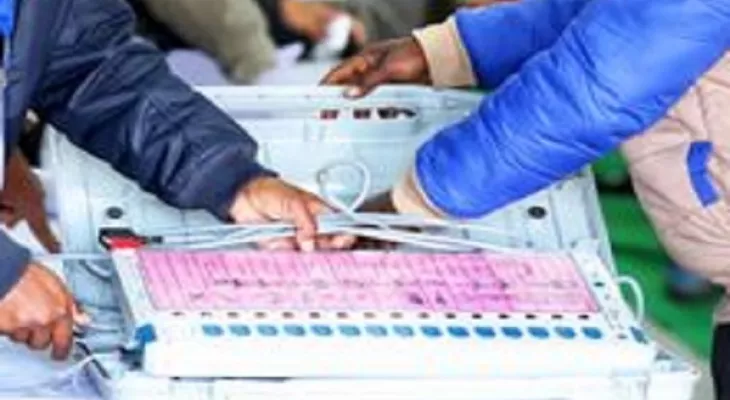
Lucknow, Feb 14 (UNI) Voting began at 55 Assembly constituencies of Uttar Pradesh, spread across nine districts, for the second phase amid tight security. Around 2.02 crore voters, including 1.08 crore males and 94 lakh females are eligible to decide the electoral fate of 586 candidates, including 69 women, in this phase, according to Chief Electoral Officer Ajay Kumar Shukla. He said that polling, which will continue till 6 pm, will be held at 23,404 polling booths at 12,544 polling stations in Saharanpur, Amroha, Bijnor, Rampur, Sambhal, Moradabad, Bareilly, Badaun and Shahjahanpur. “In the 2017 elections, 65.53 per cent votes were polled in this phase,” added the CEO.
Additional Director General of Police (Law and Order) Prashant Kumar said that eight Assembly constituencies, including Nagina, Dhampur, Bijnor, Asmauli, Sambhal, Deoband, Rampur Maniharan and Gangoh, have been categorised as sensitive. “In the second phase, total 436 hamlets and localities have been marked as vulnerable and 4,917 polling booths have been identified as critical,” he added.
The ADG said that 127 pink booths have been set up specially for women, on which 42 female inspectors or sub-inspectors, 488 constables and head constables have been deployed. “In this phase, 733.44 companies of Central forces will be deployed at 12,544 polling booths,” he said. “From UP Police, 6,860 inspectors and sub-inspectors, 54,670 constables and head constables, along with 18.1 companies of Provincial Armed Constabulary (PAC), 930 PRD jawans and 7,746 Chowkidars, have been deployed in this phase,” Kumar said. Riding high on Modi wave, BJP made inroads in this region in 2017 by winning 38 seats, whereas SP won 15 and its ally Congress two. According to political analysts, the division of Dalit votes was such that BSP failed to open its account.
Three ministers in the Yogi government are trying their electoral luck in this phase. Suresh Khanna is contesting from Shahjahanpur, Gulabo Devi from Chandausi in Sambhal district and Baldev Singh Aulakh from Bilaspur seat in Rampur district. Prominent opposition leaders who are contesting in this phase include senior Samajwadi Party (SP) leader Azam Khan from Rampur Sadar, former minister in Yogi government and now SP candidate Dharmpal Singh Saini from Nakur in Saharanpur and Mehboob Ali from Amroha. As most of the seats in this phase are dominated by Muslims and Dalits, it is considered to be a bastion of Samajwadi Party (SP) and Bahujan Samaj Party (BSP).
Keeping in view the caste equations in this region, political parties have fielded candidates strategically. In view of the demography, political parties have fielded 75 Muslim candidates. While BSP has fielded maximum 25 Muslim candidates, SP-Rashtriya Lok Dal (RLD) combine has filed 18 candidates and Congress has named 23 Muslim candidates in this phase. Asaduddin Owaisi led All India Majlis-e-Ittehadul Muslimeen (AIMIM), which is trying hard to gain ground in politically important UP, has made the contest interesting by fielding 18 Muslim candidates. This is also important as out of 55 seats Muslims decide victory or defeat on 25 seats and Dalits on 20 seats.
According to political analysts, while resentment among the farmers, especially after year long protest against the three farm laws, could increase problems for ruling BJP, SP is trying to better its performance riding on its alliance with RLD and other smaller parties having presence in this region. It may be mentioned here that in 2012 when SP came to power in the state it won 27 seats out of 55, whereas only eight seats went to BJP’s share. Of the nine districts in the second phase, Dalit and Muslim voters are the deciding factor in Rampur, Sambhal, Moradabad, Saharanpur, Amroha and Bijnor. SP, BSP and RLD contested 2019 Lok Sabha polls in alliance and won all the seats in this region.
While SP won Rampur, Moradabad and Sambhal, Saharanpur, Nagina, Bijnor and Amroha went to BSP. According to the political analysts this time as the elections are focused on balancing caste equations, it will be difficult for the BJP to attract votes on the basis of security and religious grounds. Besides, from the list of candidates of all the parties in the fray it is clear that they are dependent on the polarization of Dalit, Jat and Muslim electorates, they said. Problems of the farmers remains a major issue in western UP, which was the center of the agitation against three farm laws. By withdrawing the three farm laws, the Modi government has attempted to mitigate the effect of the protest, but resentment among the farmers remains a challenge for BJP.
To water down the resentment Prime Minister Narendra Modi, Home Minister Amit Shah, Chief Minister Yogi Adityanath and BJP president JP Nadda have extensively campaigned in the region highlighting the development and welfare works done by the ‘double engine’ government, specially those related to the farmers. Besides, BJP has made Amit Shah, considered to be the party’s ‘Chanakya’, in-charge of the poll strategy in the western UP, but it will also prove to be a litmus test for him.
It would be interesting to see whether SP will be able to succeed this time after failed alliance efforts several times in the past. BSP is also making an effort to turn the contest between BJP and SP-RLD into a triangular fight. The party is also vying to win two dozen Dalit-dominated seats in the region. For the party, which failed to secure even a single seat in the last elections, it’s a do or die situation.


